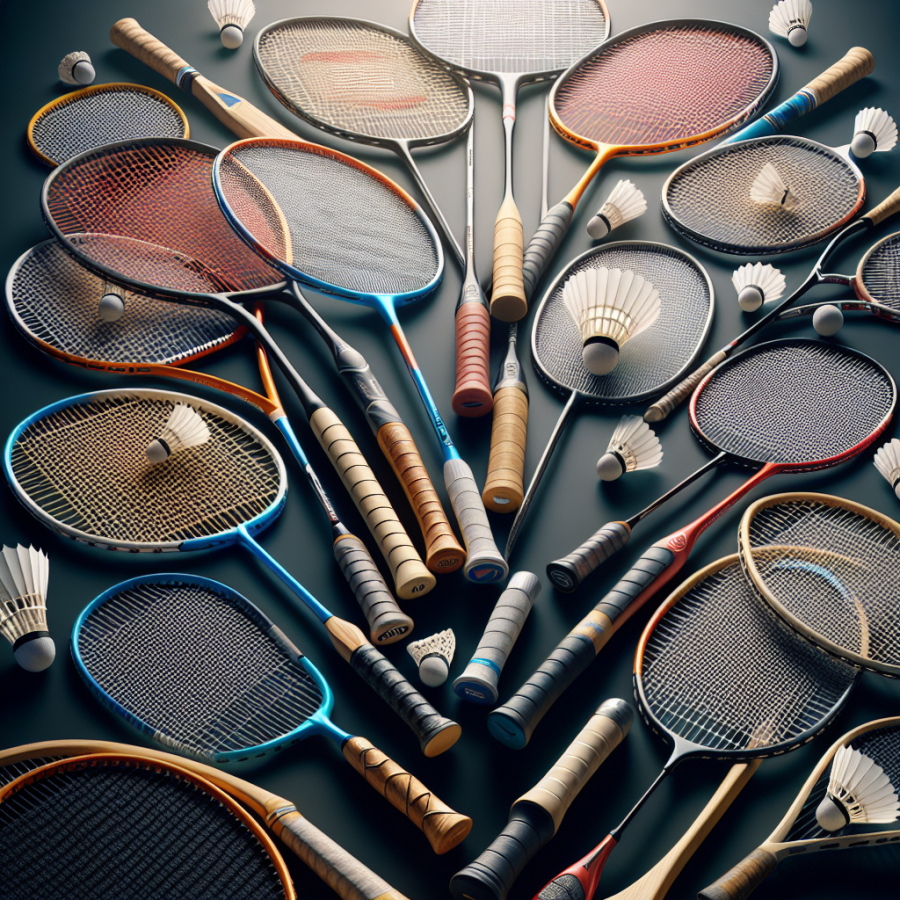Advancements in Materials and Construction: The Transformation of Racket Design
The world of racket sports has undergone a seismic transformation over the past few decades, with materials science and construction techniques playing pivotal roles in how rackets are designed, built, and ultimately, how they perform. These advancements have allowed players at all levels to benefit from rackets that are lighter, stronger, and tailored for precision and endurance.
Initially, wood was the primary material used in racket making. However, with the advent of new materials, racket manufacturers began to explore the potential of metals such as steel and aluminum. These materials offered greater durability and lighter weight, which allowed for a larger racket head size, leading to a larger sweet spot. As a result, players could hit with greater power and control, changing the dynamics of racket sports.
The incorporation of composites marked another significant leap in racket technology. The use of materials such as carbon fiber, fiberglass, and Kevlar transformed racket construction by offering high strength-to-weight ratios and enhanced elasticity. Carbon fiber, for instance, became widely used due to its stiff nature, which provided power and energy efficiency upon ball impact with minimal weight, fundamentally changing the mechanics of stroke play.
The science behind materials has continued to evolve, with researchers developing hybrid composites that blend characteristics of different fibers for specific outcomes. Nanomaterials, such as graphene and carbon nanotubes, have been integrated to produce even lighter and stronger rackets, allowing for a high degree of maneuverability without sacrificing the structural integrity of the racket or the power behind every shot. These developments have also enabled the tuning of racket characteristics to suit individual playing styles, making the distinction between power- and control-oriented rackets more pronounced.
However, it’s not just the materials themselves that have sparked a revolution in racket design. The methods of construction have evolved in sync with material advancements to optimize the performance characteristics of rackets. The layup process, where layers of composite materials are meticulously aligned and bonded, can be tailored to influence the flexibility and balance of the racket. This precision means that energy from the player's swing is transmitted more efficiently to the ball.
Additionally, the industry has seen innovation in racket stringing patterns and tensions, which complement the advancements in frame design. The ability to customize these aspects allows players to maximize spin, power, or control based on their playing style and preferences. Computer-aided design (CAD) and simulation have been instrumental in perfecting these aspects, enabling a data-driven approach to racket engineering.
Read also:
The Universal Appeal of Soccer: A Global Phenomenon
Certainly! Below is an expanded blog section text that delves deeper into the evolution of racket design and technology, complementing a main article on the subject.
-----
The exploration of racket design and technology is akin to unveiling a rich tapestry of innovation that has been tightly woven into the fabric of racquet sports. Over the years, the transformation has been quite revolutionary, reflecting both advances in materials science and a deeper understanding of biomechanics.
**Pioneering Days to the Mid-20th Century: Wooden Rackets Rule the Court**
In the pioneering days of racquet sports, rackets were crafted entirely from wood, a material that had been a prime choice due to its availability and natural properties. The earliest designs were characterized by their solid heads and long handles, optimal for the technique of the time.
As matches became more competitive, so too did the quest for improved performance. Laminated wooden rackets, employing multiple layers of wood glued together for increased strength and stability, became the standard. By the mid-20th century, brands like Dunlop and Wilson were producing wooden rackets en masse, offering players consistency and reliability like never before.
**1970s: Birth of Metal and Composite Rackets**
The 1970s heralded a new dawn in racket technology with the introduction of metal frames. Constructed initially from aluminum, these rackets offered players an unprecedented level of power. The iconic Wilson T2000 - famously used by Billie Jean King and Jimmy Connors - was amongst the first in this new wave of equipment that would place strength over finesse.
Following metal, composite rackets soon surfaced, leveraging the strength-to-weight ratio of novel materials like fiberglass, carbon fiber, and later, graphite. These composites allowed for lighter, stiffer frames, providing players not only with more power but also with greater maneuverability - an essential factor for the swift volleys of modern play.
**1980s to Present: Oversized Heads and Customization**
The arrival of oversized heads transformed the game in the 1980s, giving birth to new playing styles by increasing the 'sweet spot' on the racket, therefore reducing the margin of error on off-center hits. This innovation facilitated increased control for players and enabled them to impart more spin on the ball.
Nowadays, racket customization has become an integral part of the technology.
The Impact of Modern Technology on Racket Performance and Player Technique
The advent of modern technology has significantly influenced the landscape of racket sports, leaving a transformative imprint on racket performance and player technique. Through the course of the last few decades, advancements in materials science and engineering have paved the way for dramatic changes in the design and manufacturing of rackets, revolutionizing the way athletes train and compete.
One of the most apparent impacts is visible in the composition of rackets. Historically, wood was the primary material used in racket construction. However, the shift to lightweight and robust materials like carbon fiber, graphite, titanium, and kevlar has allowed for rackets that are not only lighter and stronger but also provide greater power and control. These materials have the unique property of high stiffness-to-weight ratio, meaning players can swing faster without sacrificing stability. This has enabled players to hit the ball with more speed and spin than ever before.
The geometric design and stringing of rackets have also undergone a significant evolution due to technology. Oversized racket heads have become the norm, offering a larger sweet spot, which allows for better off-center hits. The use of advanced computer modeling and finite element analysis in design has resulted in frames that optimize the distribution of stress and flex across the racket, further enhancing power and control.
In the world of string technology, the development of polyester and multifilament strings has allowed players to impart unprecedented levels of spin on the ball. The introduction of hybrid stringing patterns, where different strings are used for the mains and crosses, has enabled players to customize their rackets to their playing style, further influencing their technique.
As rackets have become more powerful, players have adapted their techniques to maximize performance. The traditional, flat strokes once predominant in sports like tennis and badminton have given way to modern, topspin-heavy strokes that allow for more aggressive play. The serve, one of the critical shots in tennis, has evolved with players utilizing the increased racket power to generate higher service speeds.
The training methods used by athletes have also evolved. With technology enabling detailed data analytics, players and coaches can dissect every aspect of their performance. High-speed cameras and sensor technology not only help in fine-tuning technique by analyzing aspects like swing path, contact point, and body positioning but can also assist in preventing injuries through more efficient movement patterns.
The impact of technology is also evident in the customization of rackets to suit individual player needs. Gone are the days when rackets were produced with a one-size-fits-all approach.




